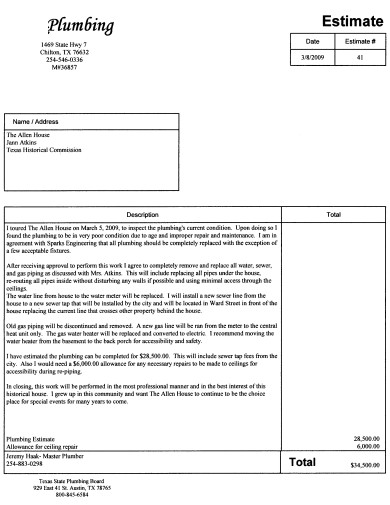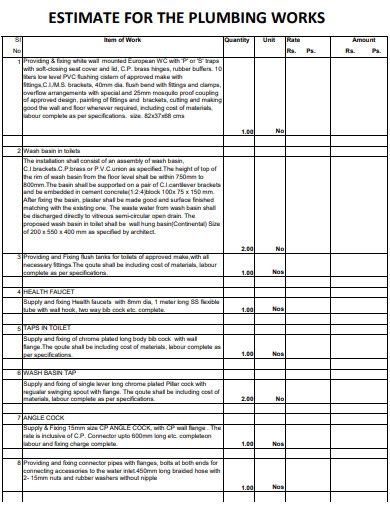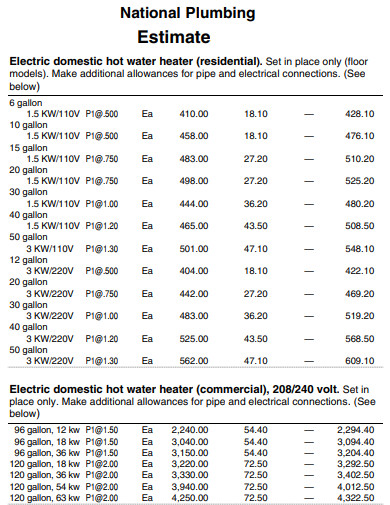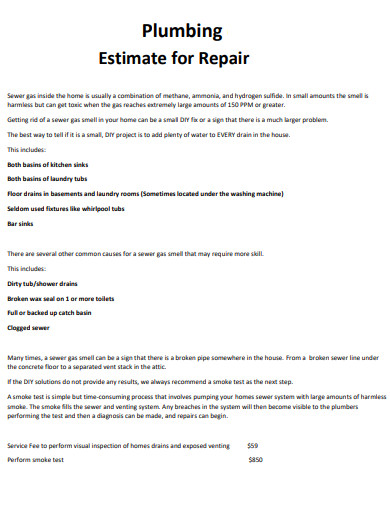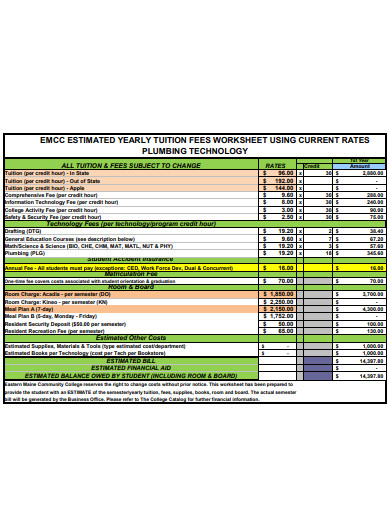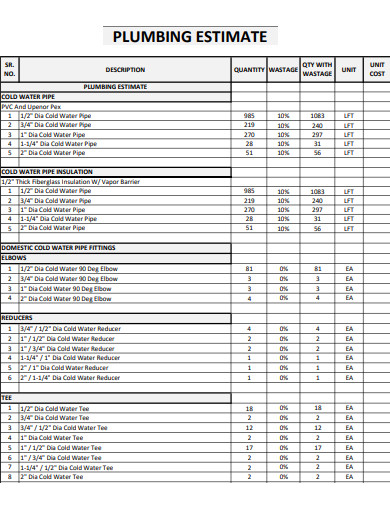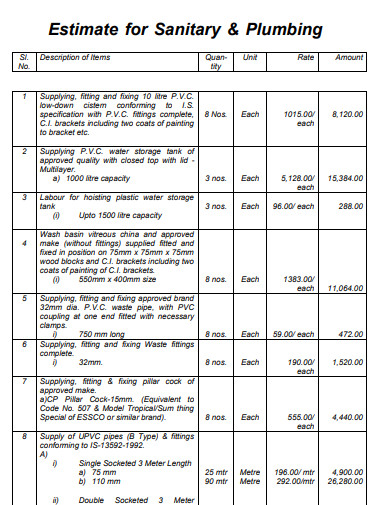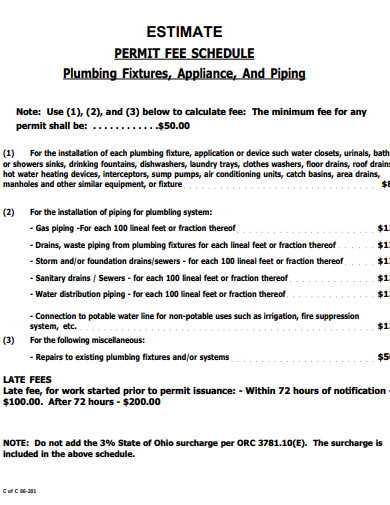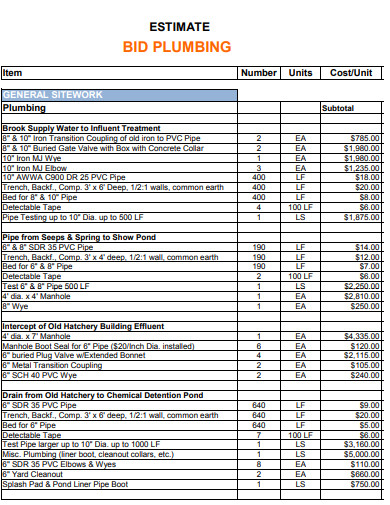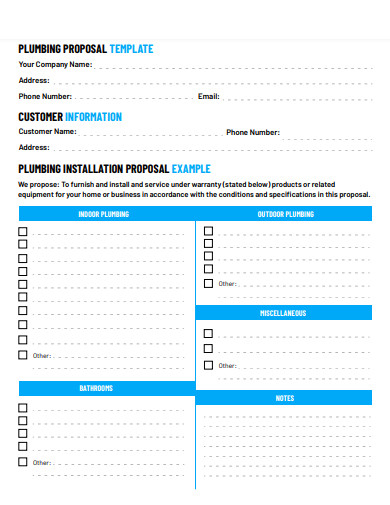The life of a plumber is a very active one. When you are in the middle of a plumbing maintenance, you frequently get phone calls asking you to deal with urgent situations. You need a method that is both simple and quick to use in order to generate detailed and professional estimates. Our company makes it incredibly easy to generate plumbing estimates and swiftly deliver them to prospective construction clients by streamlining the process. Imagine being able to create and transmit an estimate directly from your laptop while you are standing in the kitchen of one of your customers. It’s possible that this business plan will only work for jobs of a certain size, but it’s still a vast improvement from scribbling sentences hastily on a piece of paper.
10+ Plumbing Estimate Samples
1. Plumbing Estimate
2. Plumbing Work Estimate
3. National Plumbing Estimate
4. Plumbing Estimate for Repair
5. Plumbing Estimated Yearly
6. Sample Plumbing Estimate
7. Sanitary And Plumbing Estimate
8. Plumbing and Tenant Estimate
9. Plumbing Permit Fee Estimate
10. Plumbing Bid Estimate
11. Plumbing Proposal Estimate
What Is a Plumbing Estimate?
An estimate in plumbing is a document that details the pricing proposal that you intend to charge a client for a plumbing-related commodity or service. It provides a line-by-line breakdown of expenditures and budget (such as the costs associated with supplying drywall installation), allowing customers to better understand where the total amount is coming from.
How To Make a Plumbing Estimate?
You probably take pleasure in owning a business, but the administrative labor that comes along with it is not something you look forward to. After all, very few individuals take pleasure in completing administrative tasks. However, dealing with them is an inevitable aspect of running a plumbing company. And it is to your advantage to remain on top of things. The majority of your paid work will begin with the preparation and submission of bids, estimates, and other documents. Therefore, get started making things by following the procedures that are provided below.
Step 1- Add the Business and Customer’s Name
When you send out estimates, they must always include your information as well as the name and address of the recipient customer. Including the customer’s name and address in the communication will increase the likelihood that they will pay attention to it. Verify that you have spelt their name correctly and that the address that you have for them is correct.
Step 2- Add a Business Logo
Include your company’s logo to your estimates for a more personalized touch. Including a company logo in an estimate created using a template from Template.net requires only three simple steps to accomplish.
You can find it on our site or on the page for the template. Be sure to examine your company’s logo to ensure that it conveys the right image of your company. Voila! You’ve created an estimate that looks quite professional and even includes your company’s logo.
Step 3- Come up with Estimate Number
Is this your first time working with actual people, like actual customers? Do you realize that your estimate, just like your subcontractor invoices, needs to have a number that identifies it? If you haven’t been including numbers with your estimations, now is the time to start getting into the habit of doing so. These identification numbers are a wonderful tool for keeping track of estimations and referring to them.
Step 4- Pick a Date
The estimated date is used to maintain track of the date and time when the document was either created or sent. It is beneficial to have them because expense estimates are often accurate for a period of thirty to ninety days. Potential clients won’t be able to come back to you after a year and seek to pay the same price if you do business this way.
What are the three primary categories of estimates that are used?
The ballpark estimate, the budgetary estimate, and the definitive estimate are the three different types of estimates that can be used to communicate cost information to customers.
What are the differences between the two kinds of estimates?
Estimates can be broken down into two categories: point and interval. A value of a sample statistic that is used as a single estimate of a parameter that applies to the entire population is referred to as a point estimate.
What exactly is an estimate, and how can it be used?
The preparation of an estimate involves determining the quantities of the various things required to finish the project based on the dimensions on the drawings, and then multiplying those amounts by the unit costs of the goods concerned.
Estimates are created with the intention of assisting businesses in the process of planning for and effectively completing projects. Estimates are helpful for drawing up budgets, determining cash flow, and managing customer expectations in small firms.
Related Posts
Weekly Schedule Samples & Templates
Contractual Agreement Samples & Templates
FREE 9+ Amazing Sample Church Bulletin Templates in PSD | PDF
Sample Business Card Templates
Sample Cashier Job Descriptions
Questionnaire Samples
FREE 10+ Sample HR Resource Templates in PDF
FREE 10+ HR Consulting Business Plan Samples in MS Word | Google Docs | Pages | PDF
FREE 49+ Sample Job Descriptions in PDF | MS Word
FREE 16+ Nonprofit Budget Samples in PDF | MS Word | Excel | Google Docs | Google Sheets | Numbers | Pages
FREE 13+ Academic Calendar Templates in Google Docs | MS Word | Pages | PDF
FREE 10+ How to Create an Executive Summary Samples in Google Docs | MS Word | Pages | PDF
FREE 23+ Sample Event Calendar Templates in PDF | MS Word | Google Docs | Apple Pages
Company Profile Samples
FREE 10+ Leadership Report Samples [ Development, Training, Camp ]

